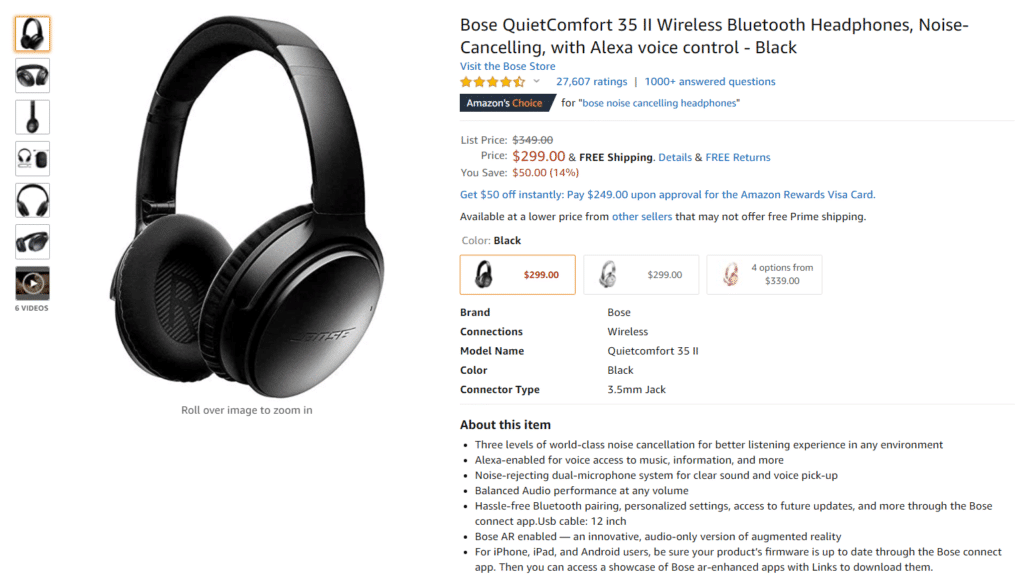Why Accurate Listings are More Important Than Ever This Peak Season

Most retailers see their peak season in one of four time periods:
- Black Friday/Cyber Monday
- Cyber Week
- Christmas Week
- Post-Christmas
In 2019, U.S. shoppers spent a combined $135 billion online during these four periods, including $64 billion in mobile eCommerce. Whether this fits the profile of your business or not, your peak season is the biggest opportunity you’ll have all year to do business. Your listings and inventory counts must be accurate.
Why Are Accurate Listings More Important Than Ever This Peak Season?
No smart ecommerce seller purposely lists inaccurate information on their online listings. However, listings are more important this year due to the significant impacts of COVID-19 on retailers.
More and more consumers have shifted their shopping online. In fact, non-store sales – mostly conducted through e-commerce – rose 28% in April 2020 alone. And online shopping of this nature has only continued to increase. The need for accurate listings is more important than ever before as consumers are relying on seller information to be accurate.
During peak season – especially this year, customer confusion is one of the biggest enemies. Confused customers simply shop elsewhere. And once they shift their loyalty, it’s difficult to earn back. If they can’t immediately find the information they need or find your products when they’re searching for specific items, they’re likely doing business with someone else.
Why Are Accurate Listings Critical?
We all know that accurate listings bring greater clarity and less confusion. Accurate listings reduce customer confusion and returns and help with SEO.
It’s not just the information that has to be accurate, inventory counts are crucial. During the beginning of the COVID-19 pandemic, digital revenue far outpaced previous years and previous months. That trend is unlikely to relinquish as consumers get more comfortable with shopping online.
In fact, non-store sales – mostly conducted through e-commerce – rose 28% in April 2020 alone.
When customers place an order, they expect it to be filled. If your inventory listing shows a product is available when you’re out of stock, not only will you lose the sale but it can have a negative impact on customer satisfaction and loyalty.
Customers hate backorders. When they’re ordering products for the holiday season or as gifts, backorders lead to very unhappy customers. These days, customers aren’t afraid to call out companies publicly when they can’t get what they want.
Do you know who else hates backorders? Amazon (and many other ecommerce platforms and marketplaces). If you’re unable to fulfill orders promptly, sites like Amazon have been known to take action against sellers, including penalties and removal from the site. Even a short amount of downtime during peak season can be catastrophic to ecommerce sellers.
On the flip side, if your listing shows you’re out of stock when you have merchandise sitting on the shelves, you’re losing sales opportunities that may be impossible to make up when peak season ends.
Another big deterrent for customers is what the retail world defines as friction. More than one-third of consumers have abandoned a sale when they run into friction, such as inaccurate listings, difficulty in getting the information they need, or the time it takes to complete the transaction.
How to Ensure Your Listings Are Accurate
Accurate listings start with an accurate inventory count. When it’s peak season, you simply cannot afford to have an inaccurate count. If things get out of alignment during peak season, you’re in trouble.
It sounds easy to make sure your counts are correct, but in today’s multichannel sales environment, if you don’t have the right inventory management system to sync everything, it’s easy to have inaccurate counts showing up.
This causes problems with sales, forecasting, and reordering. Getting it wrong can have a snowball effect. As problems roll downhill, they contribute to more problems. At the end of the day, you’ve got a giant mass of snow rather than just a tiny snowball. During peak season, you don’t have time to thaw it out.
1. Use Inventory Management System Best Practices
Using an integrated Inventory Management System (IMS), such as SkuVault, can help keep your inventory counts accurate across all of your sales channels, marketplaces, and platforms. It can also streamline operations in the warehouse to ensure your information remains accurate.
Quantity syncs and real-time product listings save your business time and money by reducing oversells and out-of-stocks due to inaccurate listings. This includes what’s on your warehouse shelves and your FBA inventory if you’re selling that way on Amazon.
Another great practice to ensure accurate counts is inventory management buffers on individual products or channel-wide basis. Buffer options such as Maximum Quantity, Push Constant Quantity, or Low Quantity Cutoff can create a sense of urgency with your buyers – especially when it’s peak season and they may be making impulse buys or rapid-fire purchases.
2. Create Consistent SKUs Across Marketplaces
SKU consistency is key to keeping quantities in sync between different marketplaces. It also saves you time and guesswork when listing the same products on other marketplaces. And if there’s anything a successful seller needs during peak shopping season, it’s more time.
3. Optimize Your Listing Content

Every listing is loaded with content. For starters, you need a clear and concise title that sets the right expectations for your product. You also need an honest yet compelling product description accompanied by multiple high-resolution images.
Your main hero image should be a product shot with a white background. Additional images may include different angles of the product or even people wearing or using the product.
A standout product description should enrich the product, not just offer basic information. Using bulleted lists can make your description easy to skim and stands a better chance of influencing the buyer’s decision.
To optimize your listing, include relevant keywords so that your product shows up in search results. You should also add appropriate category tags and attributes to help search algorithms better understand your product. This gives you the best chance of showing up in relevant searches at opportune times.
4. Offer Fast Shipping
When it comes to holiday shopping, speed is the name of the game. Online shoppers favor convenience, and this extends to how quickly their packages ship out. One survey found that the majority of shoppers expect shipping to be fast and free, which is often the determining factor of whether buyers will purchase from you or someone else.
If you want to boost conversions, consider offering free two-day shipping. At the very least, it gives buyers confidence that their items will arrive on time.
5. Engage Dynamic Pricing Strategies
SellerActive’s repricing feature adjusts prices in real-time, based on marketplace activity. This helps you avoid pricing yourself out of the market, but also ensures you’re not under pricing yourself and sacrificing margins. Applying a dynamic repricing strategy can boost your chances of earning the coveted Buy Box on Amazon.
6. Double Down on Inventory
You can’t sell what you don’t have. Ensure items are in stock so you can ship them out quickly. Two features that can help you are min/max buffers, and low stock filter, which both prevent you from overselling when using SellerActive.
Because if you were to oversell, you’d have to cancel orders, and that in turn would ding your seller score and could get you temporarily suspended from the marketplace.
So during the holiday season it’s wise to set a minimum buffer, and keep your eye on items that get low in stock.
7. Improve Your Seller Image
Your seller reputation can influence your holiday performance. Focus on collecting good ratings from your customers to earn trust from future customers.
8. Opt for Variation Listings vs. Single Listings
Got the same shirt in 20 colors? Trade your single listings for product variations within the same listing. It’s a lot less work, and it shows buyers all of their options so they can make the best buying decisions.
Get Ready for a Huge Peak Season
Online shopping has been a juggernaut in 2020, and peak holiday shopping season is poised to continue the trend. Now more than ever, people are relishing the idea of shopping from the comfort (and safety) of their own homes. They’re a captive audience eager to click Add to Cart―your job is to ensure they can find you at the right time and for the right price.